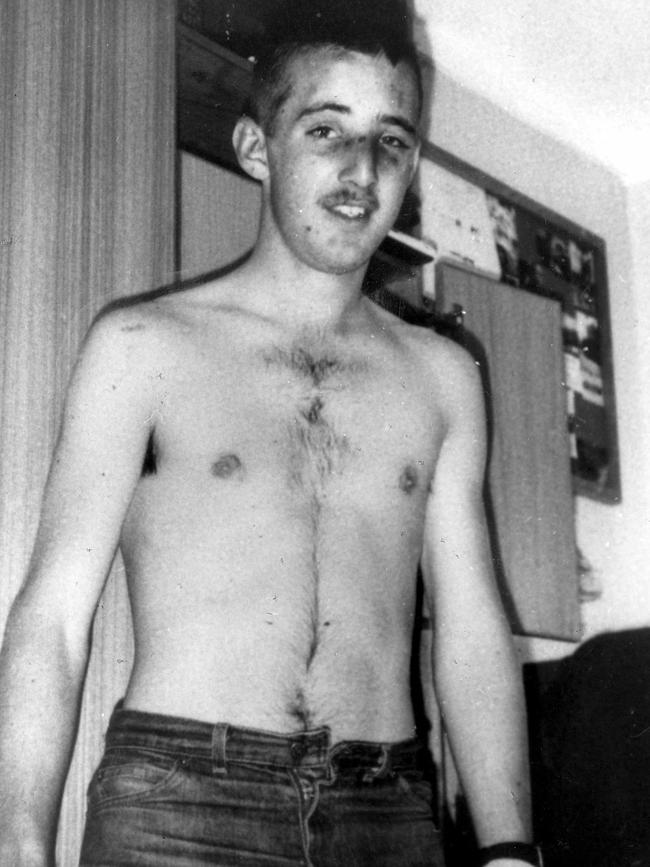Veteran Herald Sun crime writer Keith Moor recalls meeting Hoddle St killer Julian Knight in jail
He spent 46 minutes shooting at strangers, killing seven before running out of ammo. But behind bars, mass killer Julian Knight seemed a very different man to the monster a veteran crime reporter expected to meet. NEW PODCAST

VIC News
Don't miss out on the headlines from VIC News. Followed categories will be added to My News.
When I met mass killer Julian Knight in prison, he greeted me with a warm handshake.
He was happy to discuss all aspects of his case, the 46 minutes he spent shooting at strangers in Hoddle St until he ran out of ammunition in 1987.
He chain smoked, saying, “it’s my only vice these days’’.
Were it not for the fact that he had slaughtered seven innocent people and caused untold grief to so many others, he would have been likeable.
He was articulate, polite, and showed a genuine interest in wanting to prevent others running amok as he had. He said the reason he had attempted to have the Hoddle St inquest reopened was so society could examine all the circumstances and learn from them.
Knight was well-groomed. His prison-issued green jacket and trousers were well pressed, his white T-shirt perfectly laundered.
There was a look of the skinhead about him. His hair was cropped close to his head, he had sideburns and a moustache and he wore his trousers short, showing off his white socks and runners. Knight, tall and slim, had kept himself superbly fit inside Pentridge.


The only hint of disturbing behaviour displayed during my interviews with him was when he brought up the topic of the colour photographs police took of his victims.
He asked me if I had seen them.
On replying that I hadn’t, (I actually had seen them but didn’t want to let Knight know as I didn’t want to discuss it with him) he started describing them to me in graphic detail.
There was a fervour in his voice not present during the rest of our conversations. I changed the subject.
Knight told me that he had intended killing himself if police didn’t get him first. He said he was disappointed he was still alive — he is not alone there.

“I never expected to run out of bullets. I had more than 200 with me. I had put one round in my jacket and intended using that on myself if necessary,’’ Knight said.
“It still amazes me that I was able to wander around shooting at random for about 48 minutes. “Where was the Special Operations Group? Where were the police crackshots?
“Why wasn’t Hoddle St blocked off? Why were people allowed to keep coming into the area?
“I didn’t expect to last 15 minutes and certainly didn’t expect to run out of ammo.
“I was trained in the Army that when faced with a hopeless situation you surrender. That’s what I did.

“I fired off my last rounds at the two police officers near me, then frantically searched for the round I had reserved for myself, but it had dropped out of my pocket.
“I realised the situation was hopeless and gave up without a fight. There is no doubt in my mind that I would have used that last bullet if I had found it. I would have killed myself. I wish I had.’’
TRUE CRIME AUSTRALIA CASEFILE: HODDLE ST
AUSTRALIA’S WORST MASS KILLERS
THE MORNINGTON MONSTER: JOHN MYLES SHARPE
Knight said a number of prisoners had asked him why he had repeatedly shot at some of his victims.
“Again that was my Army training. I saw the motorcyclist wasn’t dead after hitting him the first time so I shot him again. I kept shooting until he stopped moving.
“Shoot to kill. That’s what the Army tells you,’’ he said.
Knight said he didn’t expect to get out of Pentridge in less than 30 years.
He made that prediction in 1988 before he was sentenced to life with a minimum non-parole period of 27 years — and is still there today.


